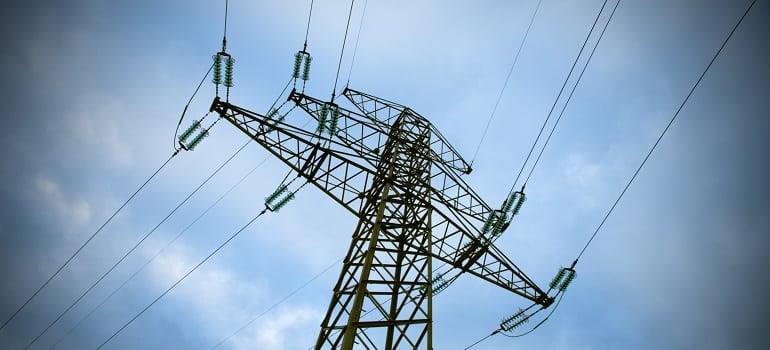Welcoming over a thousand newcomers daily, the allure of Florida’s balmy climate, scenic beaches, and enticing lifestyle is indisputable. Yet, amidst the anticipation of a move, a vital aspect often slips through the cracks – an understanding of the utility costs in Florida. This guide, presented by müv, your go-to resource for all things moving, aims to help potential Floridians who plan to move here. You will gain an in-depth insight into the landscape of utility costs in Florida. A crucial aid for your planning, let’s embark on this enlightening journey together.
Navigating the landscape: Understanding utility providers in Florida
Florida’s utility landscape is incredibly diverse. Numerous providers serve different regions, and they all come with their own pricing structures. For instance, if you’re using moving and storage Orlando services to relocate to the city, you might find yourself served by the Orlando Utilities Commission. Known for its commitment to renewable energy, this utility provider has various pricing plans. So, it’s essential to familiarize yourself with your local provider and their unique pricing plans. What’s more, many providers offer both flat-rate and variable-rate plans. While flat-rate plans offer predictability, variable-rate plans can allow for cost savings during off-peak hours. It’s a balancing act between predictability and potential savings, so weigh your options carefully.

Planning on moving to the Sunshine State? Better learn all about the utility costs in Florida now!
What about setup and installation fees?
Besides the regular monthly utility costs, there are also setup or installation fees to consider. These can add up, especially if you’re moving into a new home that requires new service installations. Some providers may waive these fees as part of a promotional offer, but it’s not a guarantee. Let’s take an example. Suppose you’re relocating with the help of Space Coast movers and the house you’re moving into requires a new water connection. In this case, the setup fees can range from $30 to $50, depending on the provider. This might seem like a small cost, but when added to the setup fees for other utilities like gas and electricity, the costs can quickly stack up. So, keep these in mind when budgeting for your move.
Whether you’re moving to the heart of Miami or the serene suburbs of Tampa, understanding your local utility providers’ landscape is crucial. Doing the research before your move can help you avoid any surprise costs and budget effectively for your new life in Florida.
Embracing the warmth: understanding Florida’s unique climate
From the northern reaches of the panhandle to the tropical southernmost keys, Florida’s climate is as diverse as it is inviting. The northern parts, such as Tallahassee or Pensacola, experience a humid subtropical climate. Here, you can enjoy four distinct seasons, albeit milder and shorter than their northern counterparts. Summer brings average highs around 90°F, and winter rarely sees temperatures dip below 40°F. The southern parts, including Miami and Key West, relish a tropical climate. Average highs hover around 90°F year-round, and snowfall is virtually unheard of.
If you’re planning a move, say from chilly Maine to sunny Tampa, your utility needs will shift dramatically. That cozy fireplace could be replaced with a high-efficiency air conditioning unit. In fact, considering that air conditioning can account for around 27% of your home’s energy usage, it’s crucial to factor this into your moving budget. Remember, efficient units might cost more upfront but will save you money in the long run.

Your electricity bills might look different than what you’re used to this year.
The price of comfort: managing humidity in the Sunshine State
Florida is famous for its sunshine, but another constant companion is the humidity. In the summer months, the humidity level can hover around 90%, making it feel even hotter than it is. Now, think of this: you’ve just hired your residential movers in Tampa and are starting your new life in the Sunshine State. But your home feels sticky, and your clothes never seem to dry. That’s the humidity at work.
In addition to your air conditioning, a dehumidifier becomes an indispensable ally in maintaining indoor comfort. A good dehumidifier costs anywhere from $150 to $300, but it’s an investment in your comfort. Plus, by reducing the humidity level inside your home, you’ll be able to set your thermostat a few degrees higher, saving on air conditioning costs.
Beyond the sea breeze: strategies for a comfortable Florida home
Living in Florida isn’t just about combating the heat and humidity. You’ll want to enjoy the beautiful sunshine and sea breezes that drew you to the state in the first place. This is where your home’s design comes into play. Embrace the sunshine state’s offerings by incorporating large windows or a sunroom to bask in the natural light. If you’re near the coast, open windows can allow the cool sea breeze to naturally ventilate and cool your home.
Additionally, homes in Florida are often designed with the state’s climate in mind. Many homes are constructed with insulation that reduces heat transfer, and windows that minimize solar gain. By choosing a home with these features, you can significantly reduce your utility costs. However, such homes may come at a premium. For instance, a three-bedroom home in Miami with energy-efficient features can cost upwards of $500,000.
Whether you’re moving to the subtropical North or the tropical South, being informed about the unique climatic conditions can help you settle more comfortably in your new Floridian home. From the costs of air conditioning to the benefits of energy-efficient homes, understanding these factors is essential for a seamless move and a comfortable life in Florida.

The utility costs in Florida can vary based on your lifestyle and the part of Florida you’re moving to.
Paying for Power: The cost of electricity in Florida
In Florida, your biggest utility expense will likely be electricity. According to the U.S. Energy Information Administration, as of 2021, the average monthly electricity bill in Florida was about $129, which is about $20 above the national average. This increase reflects Florida’s heavy reliance on air conditioning due to its warm climate. Your monthly cost can rise significantly, especially during the summer months when temperatures routinely reach the 90s. If you’re coming from cooler climates like New York or Chicago, brace yourself for higher electricity bills in your new Sunshine State home.
Understanding the flow: Water costs in Florida
Water is another significant utility cost to consider, especially if you are settling in South Florida. Here, water usage restrictions are often in place, which can increase the cost. An average Florida household can expect to spend around $40 per month on water. This can increase if you have a swimming pool or a large garden that requires regular watering. The Florida Water and Pollution Control Operators Association suggests that installing water-saving appliances and fixtures can help reduce this cost. For those planning to use moving and storage Tampa services, consider investing in water-efficient appliances for your new home.
Heating homes: The role of gas in Florida utility costs
Natural gas plays a less prominent role in Florida’s utility costs, but it’s still a factor. With the majority of homes using electricity for heating, the average monthly natural gas bill tends to be lower than the national average, around $30 per month. This can change if you’re moving to North Florida where winters can get chilly. For example, if you’re relocating to Jacksonville with the help of movers Rockledge FL, you’ll need to factor in increased gas usage during the winter months.

When in Rome – be conscientious about the environment wherever you are!
Disposing of waste: Trash and recycling Costs
Trash and recycling services are typically billed at a flat rate, and these costs are usually included in local taxes. In Florida, the cost for trash and recycling services averages around $20 per month. This includes the pick-up of regular household waste and recyclables. Taking the time to understand these utility costs and their variations is crucial. Whether you’re moving to Florida from a cooler climate or a region with a lower cost of living, knowing what to expect can help you budget effectively and settle comfortably into your new home.
Shaving off the dollars: efficient air conditioning
In Florida, mastering the art of efficient air conditioning can result in significant savings on your electricity bill. The U.S. Department of Energy suggests that simply raising your thermostat from 72°F to 78°F can save up to 18% on cooling costs. That means if your monthly electricity bill is $130, you could save up to $280 in a year. That’s a substantial saving that can help offset your moving costs if you’re planning on using a storage in Tampa FL.
But adjusting your thermostat isn’t the only way to save. Installing a programmable thermostat can allow for more efficient cooling when you’re out of the house. Also, consider using ceiling fans. They don’t lower the room temperature, but they circulate air, creating a wind chill effect that makes the room feel cooler.

You can reduce your utility costs if you act strategically.
Simple strategies: small changes, big impact
Even small changes can help reduce your utility costs in Florida. Turning off lights when you leave a room is an easy habit to form, and it can shave a few dollars off your electricity bill each month. If you replace five incandescent light bulbs with energy-efficient LEDs, you could save about $45 per year. Similarly, being mindful of water usage can lower your water bill. Turning off the faucet while brushing your teeth can save up to 200 gallons of water a month, equating to savings of around $5 per month. That’s $60 a year you could be saving, just by turning off a faucet!
Investing in efficiency: energy-saving appliances
Investing in energy-efficient appliances may seem expensive initially, but these costs can be offset by long-term savings. For example, an energy-efficient refrigerator can save up to $50 a year on your electricity bill compared to a standard model. If you’re planning to use packing service Tampa for your move, consider leaving your old appliances behind and investing in new, energy-efficient ones for your Florida home. It’s an investment in the future – your future utility bills and the planet’s future too! Moving to Florida doesn’t have to mean high utility costs. By understanding the factors that drive these costs and using strategies to control them, you can enjoy the Sunshine State without worrying about your bills.
Harnessing the Sun: Florida’s solar incentives
Florida is widely known as the Sunshine State, and it lives up to its name by harnessing this abundant resource through solar power. The state encourages homeowners to tap into this clean energy source by offering various incentives and rebates. One of the main incentives is the federal solar tax credit, which allows you to deduct 26% of the cost of installing a solar energy system from your federal taxes. This can save you thousands of dollars on your tax bill. But bear in mind, this tax credit is set to reduce after 2022, so it’s best to take advantage of it sooner rather than later.

It’s important, not to mention economical, to keep track of the new methods of saving energy.
Riding the energy wave: Net metering policies
Beyond the solar incentives, Florida’s net metering policies present another opportunity to cut down your utility costs. These policies allow you to sell any excess solar power your system produces back to the grid. You receive a credit on your bill for this power, effectively offsetting your electricity costs. If you’re moving to the Orlando area, this policy can help keep your electricity bills low.
Consider this – the average Florida household uses about 1,000 kWh of electricity per month. If your solar system generates more than this, not only will your electricity bill be $0, but you’ll also get a credit for the excess power. This could save you an additional $100 to $200 per month. By embracing these initiatives, you’ll be contributing to a greener Florida while saving on your utility costs. So, whether you’re planning to move, consider the benefits of going solar in the Sunshine State.
The final thoughts on utility costs in Florida
Understanding the utility costs in Florida isn’t merely a pre-move task. It’s a vital stepping stone in your transition to a new life in the Sunshine State. By familiarizing yourself with these costs and knowing how to manage them, you are not only preparing for a seamless move but also empowering yourself for a financially stable life. As you embark on this exciting journey, let this guide be your compass, illuminating your path towards a bright and sunny future in Florida.


Comments are closed